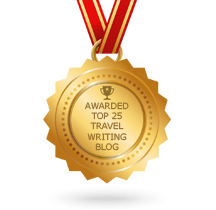Whenever you are asking a travel writer to create content for you, a clear and unambiguous brief is vital. From the perspective of clients and editors, creating a thorough brief may seem like a lot of time and effort, but in the long term it’s an invaluable time-saving – and consequently, a great money-saving – tool. Getting your writer brief right should mean a quicker writer delivery, less editing work and, most importantly of all, a superior finished product.
So how do you go about crafting the perfect travel content brief? At World Words, we both work to detailed client briefs and create our own briefs for writers, so we can attest to the important of clear guidance. So, from setting carefully-considered word limits to making your SEO needs clear, and from providing writing samples to creating comprehensive a style guide, we’ve come up with our top tips for getting the most from your travel content brief.
(This is part one of our mini series on a travel briefs. Next month, we’ll look at how writers can follow client briefs).

The points you’ll need to hit when you’re creating your brief will depend on a wide number of variables, like the content format you want, where it will he appearing and your existing relationship with the writer. If you’re working with a writer who is new to you, you’ll want to go into more detail as your standards won’t be known to them yet.
Envision the end result
Make sure you have a clear vision of how and where the finished content will appear and what the desired result will be. For online content, you should consider how often the page will need to be updated. If avoiding certain facts or topics will mean the content stays accurate and relevant for longer, put this in the brief.
Address the practicalities
If you have particular preferences for file format, naming and layout, specifying these in the brief will save you from doing the work yourself. However, consider which elements are really crucial here. If there’s no good reason to request a particular font, then don’t; adding arbitrary instructions will mean the key points get lost in the brief.
Set carefully considered word limits
For a traditional piece of travel writing or journalism, it should be easy enough to estimate an appropriate length. In the case of web copy, though, it’s not always simple to gauge how much text is required. Too much text on a page can turn visitors away. Try finding a site that you think has a good level of copy on each page and use this as a guide for your writer. Keep in mind, also, any space limitations created by the layout of your specific site.
Make your SEO needs clear
If the content is destined for a website, specify the types of SEO keywords that would be most relevant and make it clear how frequently these should appear. Over-zealous SEO can ruin a great piece of content; but conversely, forgetting about keywords means missing an opportunity to potentially boost your traffic. A subjective statement like “include a reasonable amount of keywords” is unhelpful as it’s open to interpretation. Be as clear as you can.

Provide examples
If other writers have already completed work to a similar format for you, be sure to include links to these examples in the brief. If there are no direct examples yet, try to include links to – or even just extracts from – pieces of copy that follow your desired style and tone. Describing tone using words like “informal”, “upbeat” or “professional” is helpful, but showing examples of what this looks like in practice is the surest way to convey your requirements.
Prioritise your points
In an ideal world, the writer should take everything you have included in the brief on board. However, the fact is that oversights do happen, particularly in long and complicated briefs. If there are particular elements to the brief that you consider more important than others, don’t be afraid to highlight these to make sure they aren’t missed.
Write a comprehensive style guide
Having a style guide that details your policy on tone of voice as well as common spelling, punctuation and word choice issues will prevent you from having to go over these points repeatedly for each new project. Include a link to your style guide in each brief. You can read more about style guides in this previous blog.
Want to find out more about producing great travel content? Check out the other posts in our travel writing advice section. Or else keep up to date with our latest tips and tricks by following World Words on Twitter.
—
A version of this article was originally published in December 2017 on the World Words site. Read the original.

Pingback: The Art of the Content Brief - Part Two: How Writers Can Follow a Detailed Brief - World Words